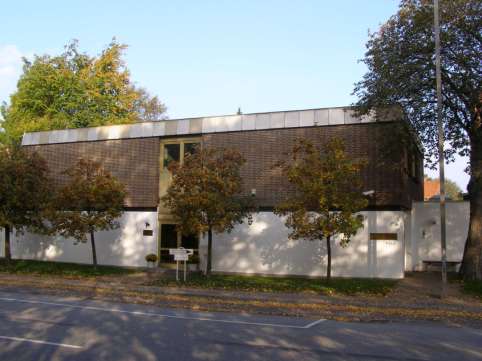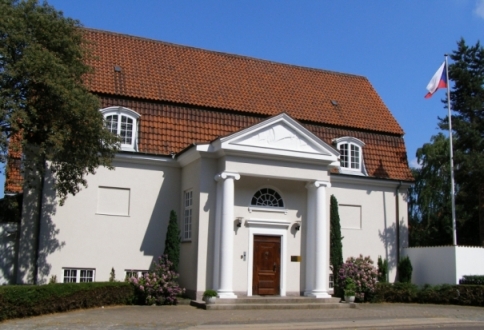History of the building
The premises of the building of the Chancery of the Czech Republic and the residential building of the Ambassador, together with the prestige spaces of the Embassy, lie in the street of Ryvangs Allé on the boundary line between two residential quarters of Copenhagen- Østerbro and Hellerup- in the neighbourhood of a couple of other embassies and institutions. Earlier these quarters with ancient and majestic buildings, mostly coming from the turning point of the 19th and 20th century and the first two decades of the previous century, were a favourite location for the building of summer houses and estates of rich Copenhageners. Today this is a town quarter of Copenhagen.
The original building, today's residential building of the Ambassador with the prestige spaces was built in the 10th and 20th years of the 20th century. It was finished and approved in 1925. In the time of its completion, buildings of stables and other agricultural houses that don't exist today completed the main building. The Chancery and housing buildings for the employees have been built in the space of the agricultural complex.

The two-storey house was originally built as a summer mansion for the family of the owner of a shipping and a shipbuilding company, M. N. Nielsen. The mansion was designed by a Danish architect A. Ludvigsen, by whom also a famous open-air museum (Frilandsmuseet) in Royal Lyngby (Kongens Lyngby) near Copenhagen was designed. Nielsen's family sold the object in 1956 and the Czech Republic bought it for the embassy. The whole complex was gradually reconstructed during the 70's and enlarged during the 80's. In the 80's the modern building of the Chancery and housing for employees were built. They were approved on the 23rd of March 1983. The architect J. N. Clausen designed these modern buildings.

The profession of the original owner of the building and his passion for the sea is visible on the building itself. The shield above the main entrance to the residence contains a fresco with a Viking ship motive on it. The entrance hall is lighted through a glass-lined window with a stylised shell. The main dinning room is decorated with a stucco ceiling and two coloured mirrors of Neptune and Mercur. The space with an ancient staircase between two rooms is a decorated with a stucco wind rose. This wind rose is coloured white, ochre and gold. The positioning of the world directions isn't random but fully corresponds to the cardinal points. The positioning is completely right. The glass-lined window that depicts the Nordic goddess Gefion with four bulls harnessed to a plough dominates the entrance hall. This window depicts an old Nordic legend that talks about the goddess Gefion. She was allowed by the Swedish King Gylfe to plough and area in Sweden, and the land she managed to plough within one day and one night, she could use in any way she wanted. So she turned her four sons into oxen and put them in front of a great plough, and off they went. After one day and one night were over, they had managed to get the earth needed to create Zealand in its present size. Where the earth was taken, the lake Vänern lies today. All the earth Gefion put into Øresund as Zealand.
The whole prestige space of the residence is divided into a couple of rooms, that are not only decorated with the original stucco decorations and wall paintings, but also with some art pieces from some Czech artists. The art pieces include: Spala's Kytice tulipánu from the year of 1939, Rabas' Pohorské zráni from 1949 or Wiesner´s and Beneš' Still-Life.





Follow us on